Advertisement
Advertisement
Soft shackles have fast become the accepted alternative to a rated steel shackle in vehicle recovery situations, but just what is a soft shackle? Is it better? How do I use it? Can I make my own? We answer all your questions about soft shackles!
When commercial sailing ruled the waves, sailors were tying knots and making soft shackles to connect bits and pieces on boats to other bits and pieces. The death of commercial sailing (thanks to the Industrial Revolution) saw cruise liners and cargo ships switch to steel for everything from rope replacement to shackles and more.
However, a boom in recreational sailing and the creation of high-modulus polyethylene lines (also known as high-molecular-weight polyethylene) has seen sailors rediscovering ropes and knots. Enter the soft shackle. These lightweight, waterproof, stronger-than-stainless-steel-equivalent shackles don’t hurt if they hit you in the head or the hand. They also don’t damage things like the deck, rigging, mast or sails – and they float, too. Four wheelers like them for almost all the same reasons. But what exactly is a soft shackle?
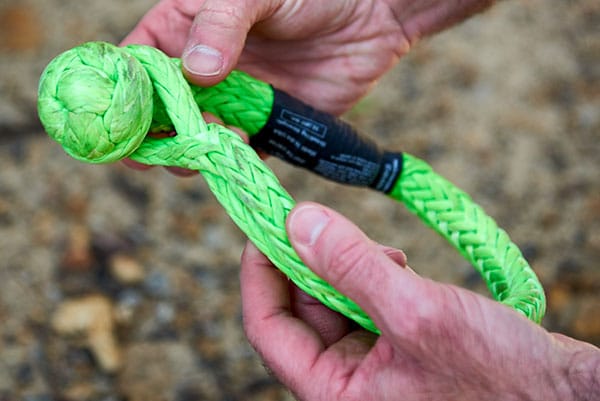
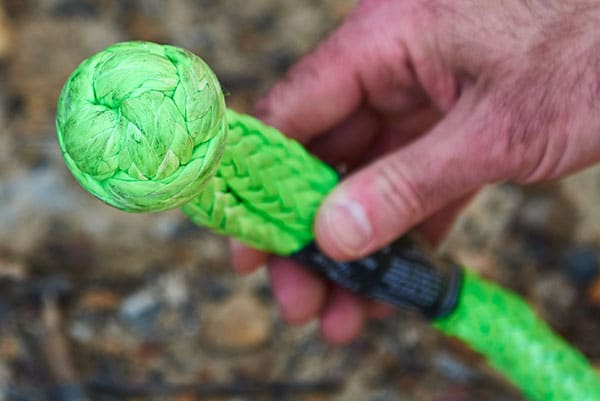
Depending on how deep your pockets are, the material most four-wheeler shackles are made from is high-modulus polyethylene rope, commonly known as Dyneema. This rope type is generally of an eight- or 12-strand construction and can be produced in varying widths from six millimetres to 48mm in thickness.
Most soft shackles used in 4X4 recoveries are 12mm in thickness and constructed from 12-strand Dyneema SK75 or SK78. Both are roughly the same, with the latter offering slightly better resistance to stretching out (and thus shape recovery) under sustained tension.
As far as construction goes, a soft shackle couldn’t be simpler. A soft shackle is made up of a ‘strop’ with a stopper at one end (knot – usually a diamond knot) and a spliced end at the other. Some shackles are often wrapped in a thinner Dyneema to give improved abrasion resistance.
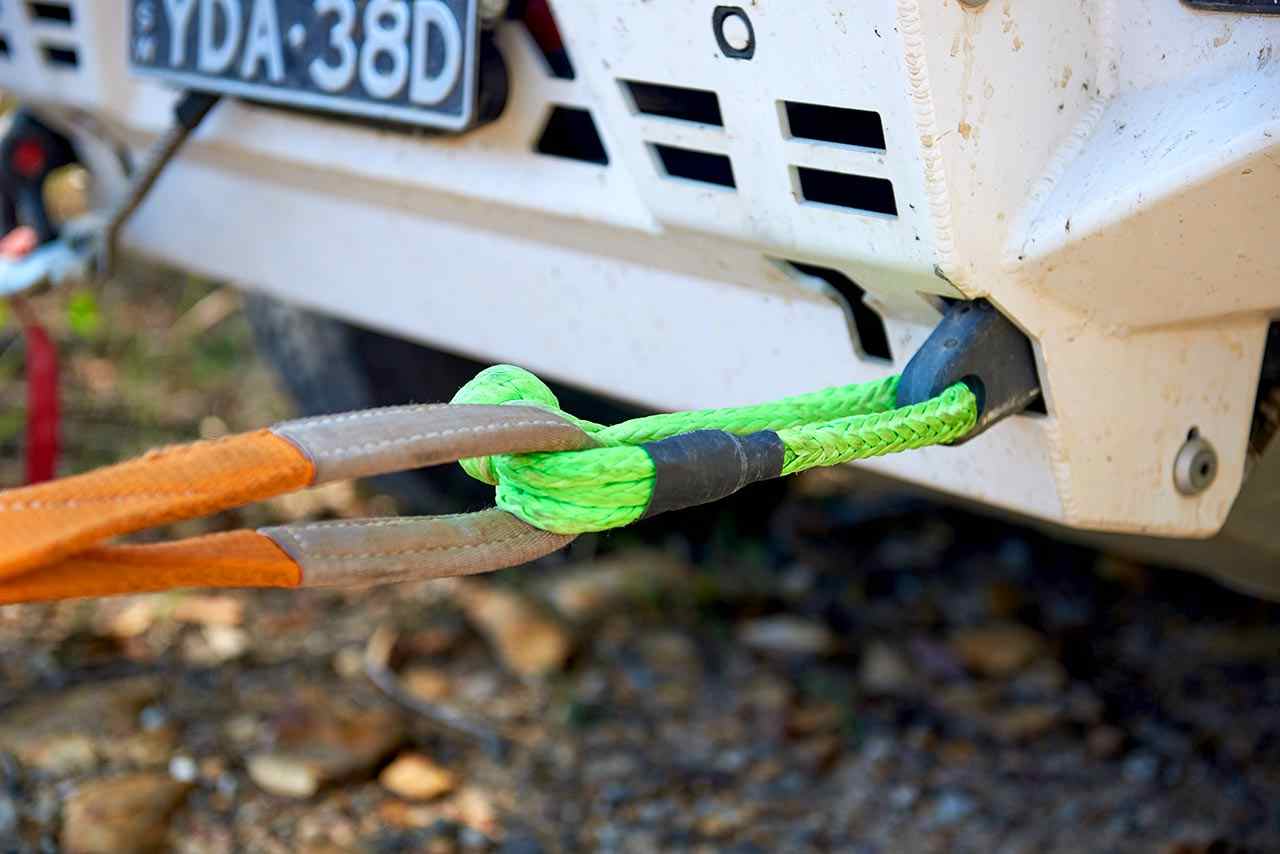
When used to connect recovery equipment like snatch straps, soft shackles are safer than steel shackles. Why? If a pin or any other part of a steel shackle fails when performing a vehicle recovery, the under-tension snatch strap will shoot through the air with a lump of steel attached to it. That could injure or even kill anyone in its path.
A soft shackle failing won’t have the same projectile force. Sure, being hit in the head by soft shackle snapping will still hurt, but it’ll hurt a lot less than a piece of steel flicked through the air at speeds of several hundreds of kilometres per hour.
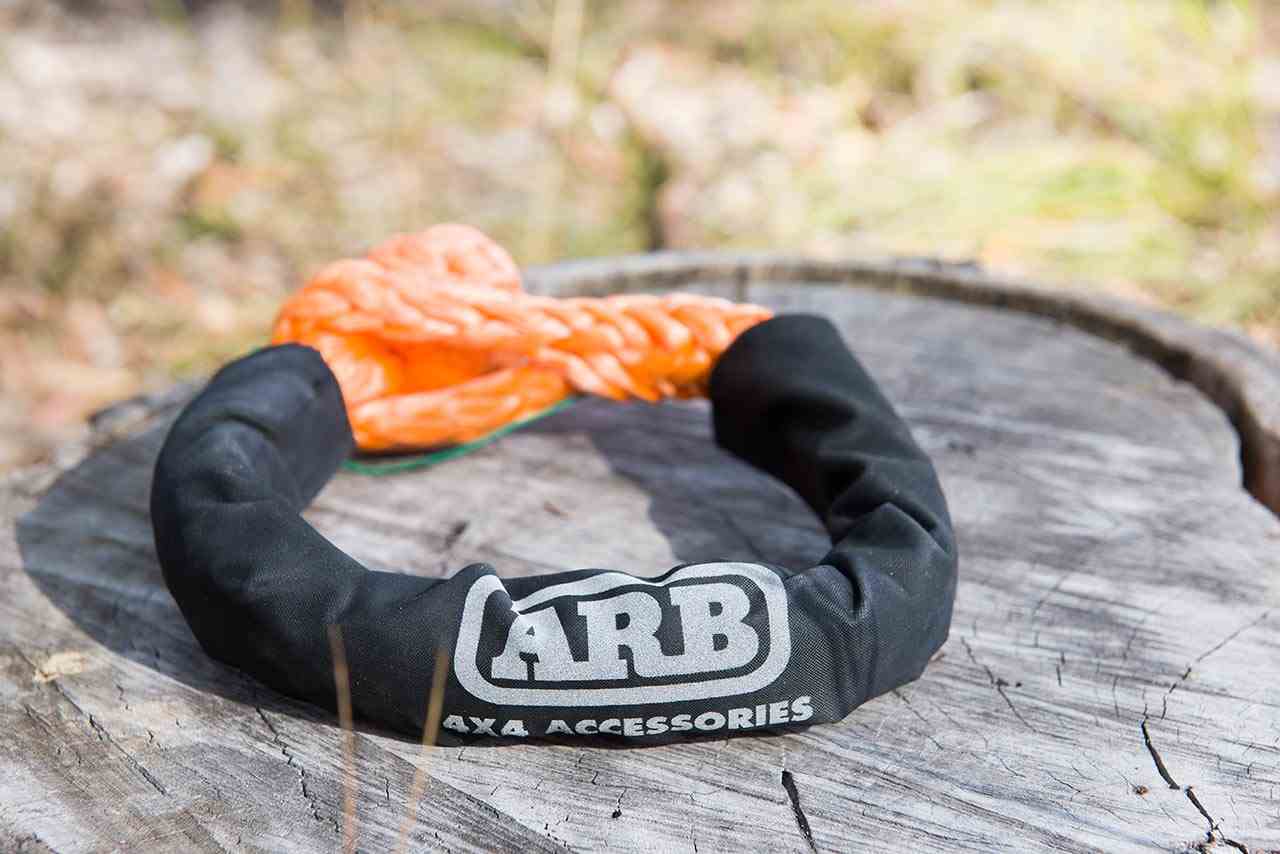
Dyneema rope is highly abrasion-resistant, which means it won’t suffer when running through a rated recovery point. But, if there are any nicks in a soft shackle, then you should throw it out immediately rather than risk using it. Some makers will fit a sheath to their soft shackles as added protection against abrasion from recovery points, and this is made from the same material as the shackle itself. These are designed to be sacrificial, and the maker usually sells replacement sheaths.
The breaking strain for most 12mm Dyneema rope that’s spliced and converted into a shackle is more than 10,000kg, with some makers advertising breaking strengths of more than 17,000kg. Look at any scientific tests conducted on soft shackles for 4X4 recoveries, and you’ll find that the knot (usually a diamond knot) and the kink in the loop are the weakest points. These points typically have a breaking point of around 10-12% less than the line itself, but this will vary from batch to batch, depending on the maker and where the product is made. More often than not, though, the knot will pull loose rather than break.
Dyneema loses about 5% of its strength each year. And if soft shackles are poorly cared for or left out in the sun for long periods, then they will perish even more quickly. If the shackles are dirty or get dropped in the mud or water (they’ll float), then they can be rinsed and then left to air dry away from direct sunlight. Make sure the soft shackle is completely dry before storing it.
Be careful your soft shackle doesn’t come into contact with excessive heat, as this can and will damage the soft shackle and reduce its performance threshold. And remember that, like a snatch strap, a soft shackle’s minimum breaking strength will decrease when wet.
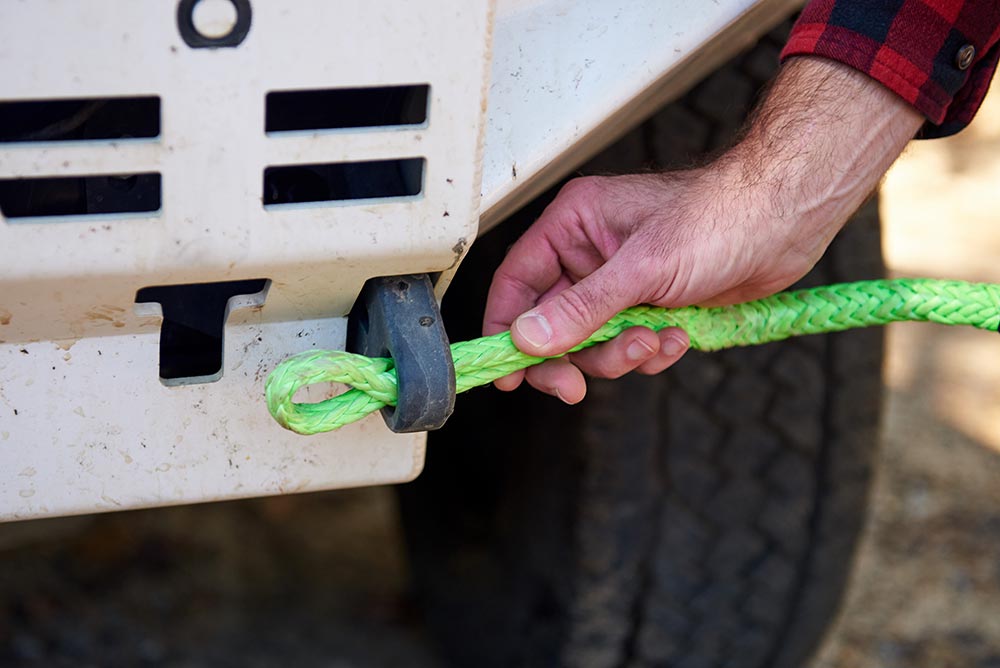
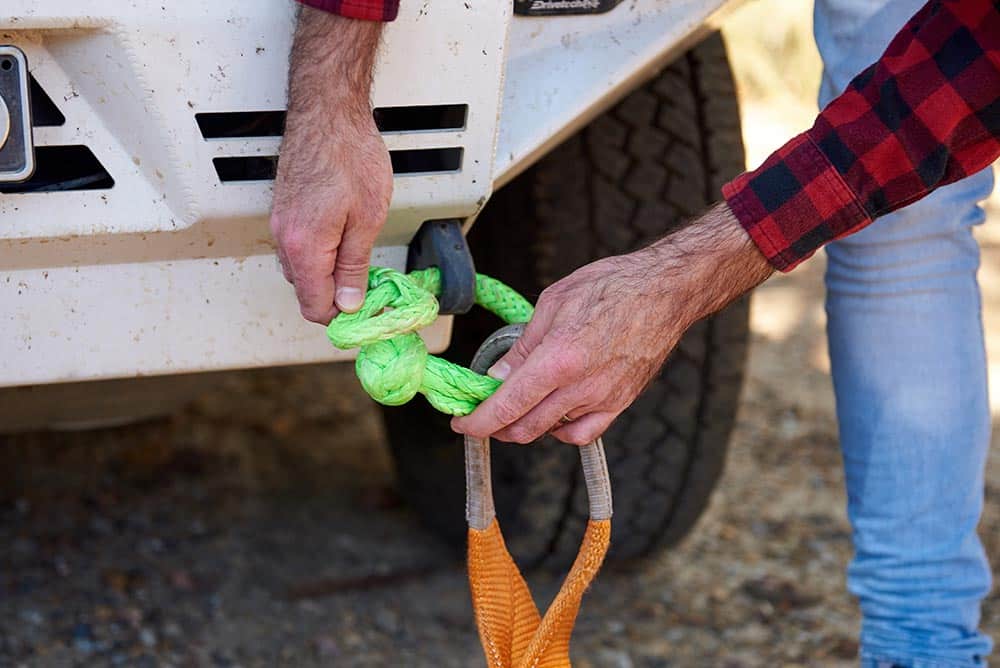
When it comes to using them in a recovery situation, they’re quite simple. Always inspect the shackle for wear and tear before using it. Thread the eye end of the shackle through the rated recovery point, and then connect it to the snatch strap or recovery rope loop by passing the eye end of the shackle through the loop. Then, pass the knot on the soft shackle through the soft shackle loop to create a secure connection.
Once the shackle and snatch strap are connected, you can proceed as you would with a regular snatch recovery. That is, slowly build up pressure until the strap tensions and the kinetic energy of the stretching strap and accelerating (in low-range at slow speed) tow vehicle helps to pull out the stranded (and also accelerating) vehicle. The aim is to use the energy of the strap to assist in the recovery rather than just try to skull-drag the stranded vehicle out.
It goes without saying you should never use a vehicle’s towball as a recovery point or its tie-down points. Only ever use rated recovery points.
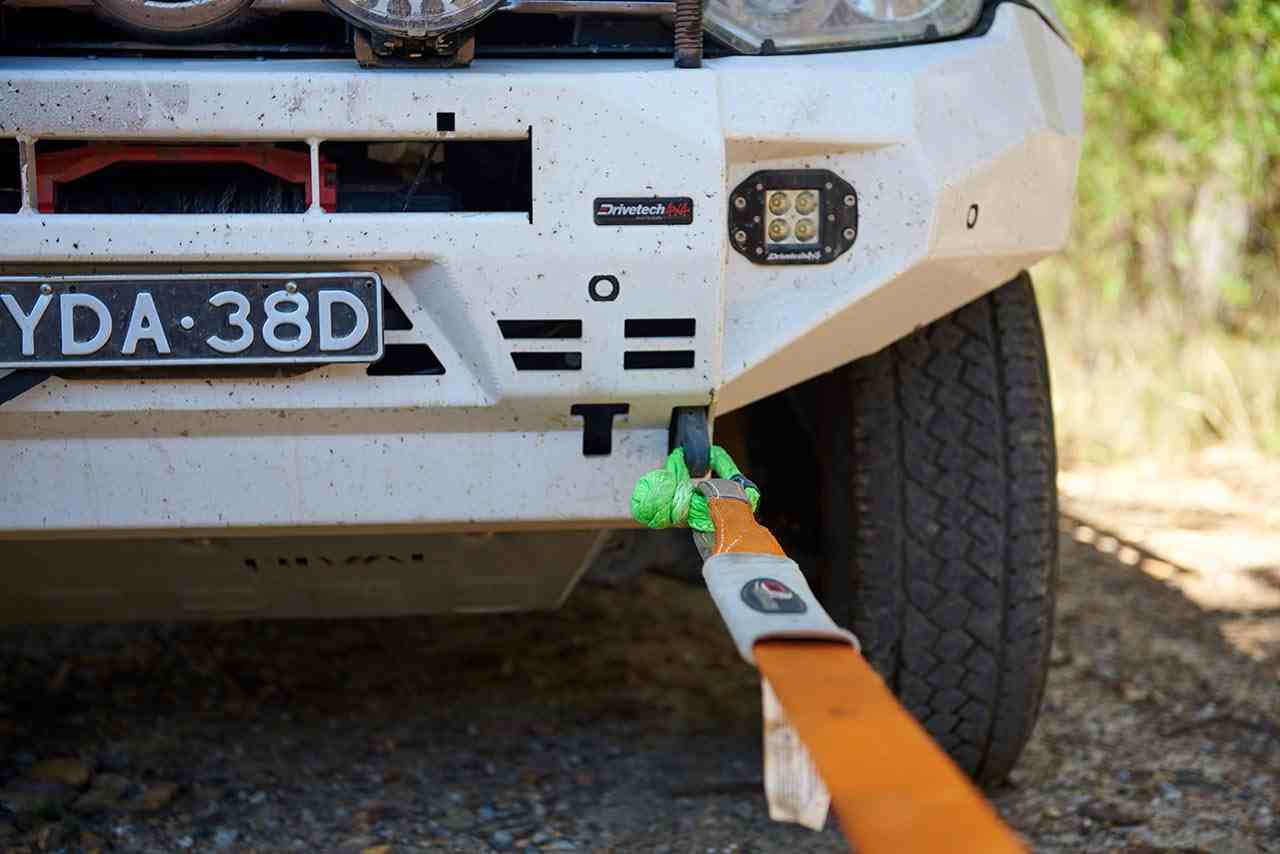
You can, but you most definitely shouldn’t. Making soft shackles is all the rage with those who sail, and the Internet is full of instructional videos on how to do it. But these are for sailors. In a 4X4 recovery situation, we wouldn’t advise risking the use of a homemade soft shackle.
Anyone can buy Dyneema rope and learn to splice a line correctly and tie a diamond knot, but tensioning the knot with a pair of pliers by hand can introduce a raft of potential weak points. Off-the-shelf shackles have had the knots tensioned with a winch and meet design and safety standards.
This article contains affiliate links to products. We may receive a commission for purchases made through these links.